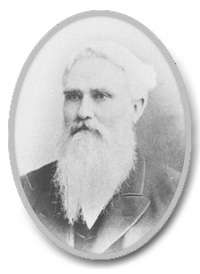John Colton (politician)
| Sir John Colton KCMG | |
|---|---|
 | |
| 13th Premier of South Australia | |
|
In office 6 June 1876 – 26 October 1877 | |
| Monarch | Victoria |
| Governor | Sir Anthony Musgrave |
| Preceded by | James Boucaut |
| Succeeded by | James Boucaut |
|
In office 16 June 1884 – 16 June 1885 | |
| Monarch | Victoria |
| Governor | Sir William Robinson |
| Preceded by | John Cox Bray |
| Succeeded by | John Downer |
| South Australian House of Assembly | |
|
In office 1862–1870 Serving with Charles Hewett, John Carr | |
| Preceded by | Alexander Anderson |
| Succeeded by | James Stewart |
| Constituency | Noarlunga |
|
In office 1875–1878 Serving with John Carr | |
| Preceded by | Charles Myles |
| Succeeded by | Thomas Atkinson |
| Constituency | Noarlunga |
|
In office 1880–1887 Serving with Thomas Atkinson | |
| Preceded by | John Carr |
| Succeeded by | Charles Dashwood |
| Constituency | Noarlunga |
| Personal details | |
| Born |
23 September 1823 Devon, England, United Kingdom |
| Died |
6 February 1902 (aged 78) Adelaide, South Australia, Australia |
| Resting place | West Terrace Cemetery[1] |
Sir John Colton, KCMG (23 September 1823 – 6 February 1902) was an Australian politician, Premier of South Australia and philanthropist.[2]
Background and early career
Colton, the son of William Colton, a farmer, was born in Devon, England. He arrived in South Australia in December 1839 aboard Duchess of Northumberland with his parents, who went on the land. Colton, however, found work in Adelaide, and at the age of 19, began business for himself as a saddler. He was shrewd, honest and hard-working, and his small shop eventually developed into a large and prosperous wholesale ironmongery and saddlery business, John Colton and Company, which became Harrold, Colton & Company in 1889, then in 1911 Colton, Palmer and Preston Ltd.,[3] at the Topham Street corner of Currie Street, which firm survived as hardware merchants well into the latter half of the 20th century.
He gave £100 to start the work on the Pirie Street Wesleyan Church[4] where he was an active member for over 50 years.[1]
Political career
In 1859 Colton was elected a member of the Adelaide City Council, and on 17 November 1862 was returned to the South Australian House of Assembly for Noarlunga,[5] at the head of the poll.
On 3 November 1868 he became commissioner of public works in the Strangways ministry, but when this cabinet was reconstructed in May 1870 he was omitted. He was Mayor of Adelaide 1874-5, and on 3 June 1875 joined the second Boucaut ministry as Treasurer of South Australia, but he resigned in March 1876. On 6 June he formed his first ministry as premier and commissioner of public works. His ministry lasted until 26 October 1877, when it resigned after a constitutional struggle with the upper house, which had not been consulted about the new parliamentary buildings. The government, however, had succeeded in passing a liberalized crown lands consolidation bill, and a forward policy of public works in connexion with railways and water supply had been carried out.
Colton might have been premier again in June 1881, but stood aside in favour of Bray. On 16 June 1884 he became premier and chief secretary in his second ministry, which in the following twelve months passed some very useful legislation, including a public health act, an agricultural crown land act, a pastoral land act, a vermin destruction act and a land and income tax act. The ministry was defeated on 16 June 1885. Seldom had a ministry done so much in so short a time, but Colton was prostrated by overwork and was compelled to live in retirement for some months. On his return to parliament he attempted to lead the opposition, but an attack of paralysis finished his political career and he resigned from parliament in January 1887.
Later years
Colton paid a visit to England and regained some of his health. Henceforth, he gave much of his time to philanthropic work. It was said of him that no society or charitable institution ever appealed to him in vain for either financial or personal assistance, if they could show that their aims were worthy. He took a great interest in Prince Alfred College, and was its Treasurer for many years, and was for a time chairman of the board of management of the Adelaide hospital. He was a great advocate for temperance and retained his interest in the Methodist Church throughout his life.
He was created KCMG on 1 January 1891. He died in Adelaide on 6 February 1902.[6]
Family
On 4 December 1844, he married Mary Cutting (December 1822 – 30 July 1898) who, as "Lady Colton", is remembered as a philanthropist and suffragist. He was survived by four sons and a daughter.[6]
References
- 1 2 "THE LATE SIR JOHN COLTON". The Chronicle. Adelaide. 15 February 1902. p. 33. Retrieved 9 January 2016 – via National Library of Australia.
- ↑ Parr, S. R. "Colton, Sir John (1823–1902)". Australian Dictionary of Biography. Canberra: Australian National University. Retrieved 20 January 2014.
- ↑ "Concerning People". The Register (Adelaide). LXXVI, (20, 246). South Australia. 2 October 1911. p. 6. Retrieved 27 November 2017 – via National Library of Australia.
- ↑ "Odd Aspects Of City Church's Centenary". The Advertiser. Adelaide. 8 July 1950. p. 2. Retrieved 9 January 2016 – via National Library of Australia.
- ↑ "John Colton". Former Member of Parliament Details. Parliament of South Australia.
- 1 2
